By pure happenstance, I arrived in Hungary on the eve of Easter weekend just as Paddy did 90 years ago. Dropping my gear off at the hotel, I headed into town to grab some pulled pork as my celebratory supper. (This was one of the many cravings of the trip thus far. Most of these were frankly ridiculous, such as fish and chips, or American diner food – both of which I was hardly accustomed to back home – but there were a few I was able to sate: namely the Five Guys experience in Düsseldorf and Stuttgart, and, most scenically, a turn on the swings in the fort of Koblenz looking out over the Confluence under the night sky and the first light fallings of snow.) However, homesickness soon abated, for the most part, and these eccentric yearnings had largely petered out. I digress…

Eastertide
On waking in Hungary, my first port of call was the Esztergom Basilica, otherwise called the Primatial Basilica of the Assumption of the Blessed Virgin Mary and St Adalbert. For the sake of brevity,I’ll stick to the former. I headed up the hill from my accommodation towards the cathedral. En route, I passed a vaulted tunnel situated just under the artificial slopes of Castle Hill: the locals had rather sinisterly dubbed it ‘The Dark Portal’. Having ascended the hill and walked up the grand promenade, I stepped past the clutch of tourists and inside the basilica.
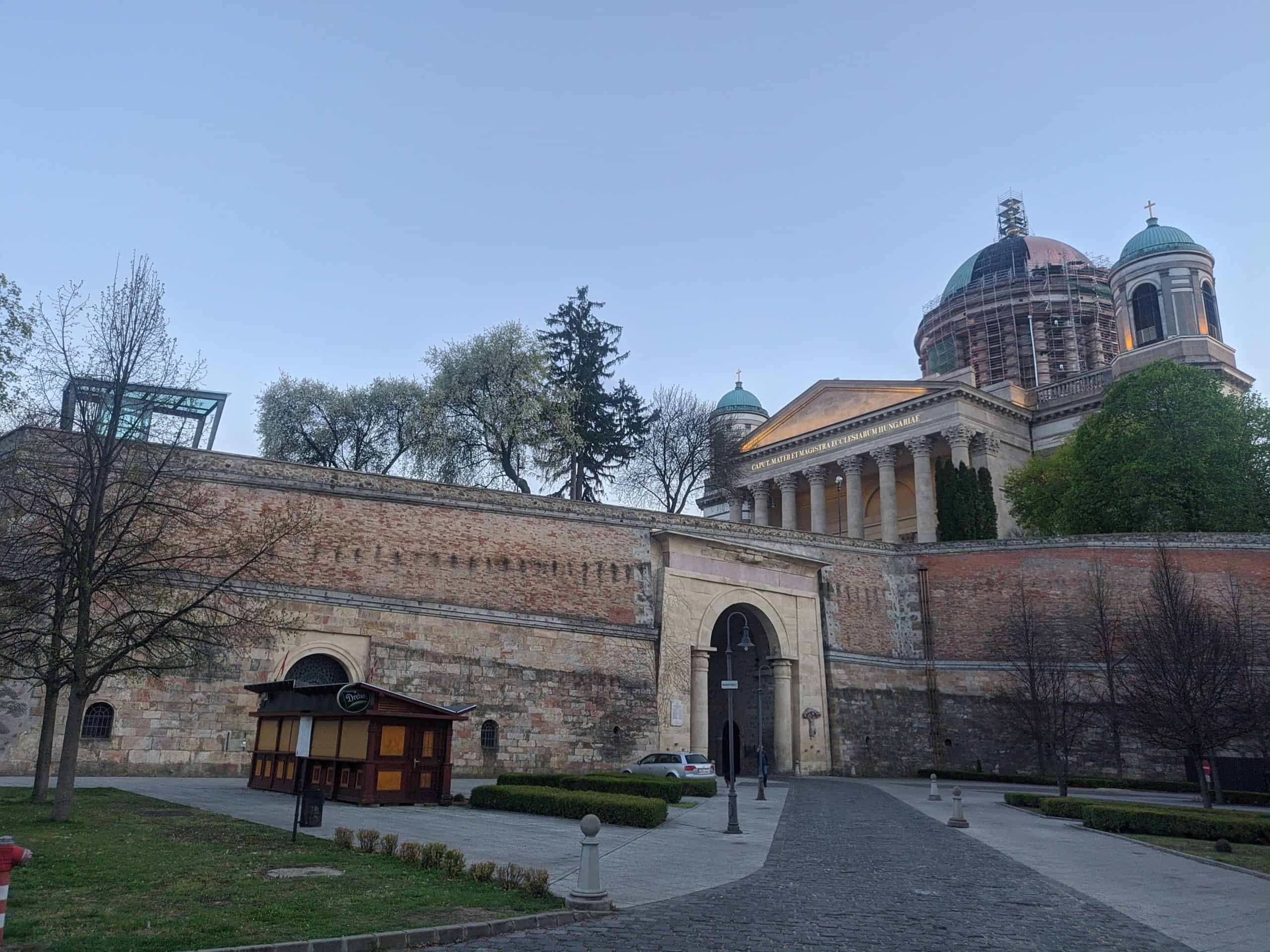
It being Good Friday, I had fully expected to find a service underway; however, I suspected one had only just finished, as when I entered, a host of priests, all clad in black, were filing out from the altar and quire. One of the priests carried with him a thurible, which clicked as it swung down from his closed fist. Once the spectacle of the priests had worn off, I began to take in my environs:
The basilica was a large, almost-singular space and the few side chapels were small and hardly recessed at all from the central space. A definitively neoclassical construction (and completed in 1869), it was the enormous dome and vaulted arches which were most striking; it had a sturdy and solid character about it. Though the vast dome in the centre of the building – one of the tallest in the world – was partly under scaffolding, the works obscured little: not much was left to the imagination. Barrel vaulting constituted the wings of the basilica.
The cathedral was certainly more sober than the baroque abbeys and churches of the last month. There was a discernibly darker colour palette: muted blues and reds complimented the stone grey. Around the altar and looming dome, square and cylindrical columns of Pietra marble stretched upwards, topped with gilded corinthian capitals. These, and the textbook rosettes which lined the central arches that flanked the main dome, were the extent of golden extravagance: quite subdued in comparison to their ecclesiastic, Habsburg sisters to the west.
The wooden pews of the quire – now empty of processioning clergymen– sat pushed back against the walls in front of the apse, focusing the eye on the altarpiece: a depiction of the Assumption of the Blessed Virgin Mary, by Girolamo Michelangelo Grigoletti — the largest painting in the world painted on a single piece of canvas. Up high, in each of the four corners below the dome, were four micro-mosaics, each depicting its own saint: Ambrosius, Gregorius, Hieronymus, and Augustinus. As I turned to leave, I spotted at the back of the basilica, supported by an ionic colonnade, a creamy white organ, presiding over the scene of solidity.

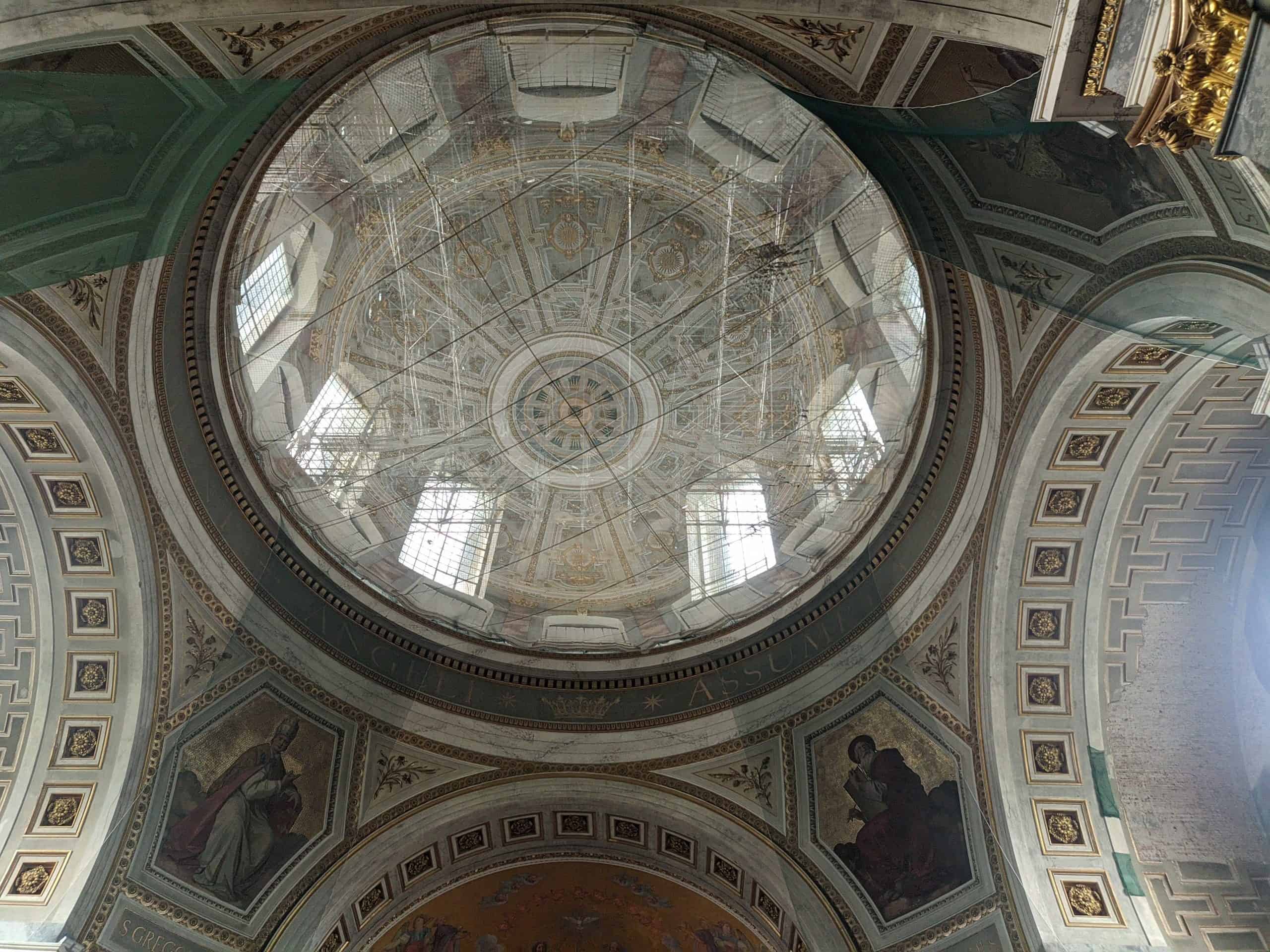

Upon entering the city the evening before, I had spotted the unmistakable white posts of a rugby pitch. Intrigued by the notion of Hungarian club rugby, I did my research, and, for my second night in town, I relocated to a new hostel by the river: the Rugby Club Hostel. The hostel comprised of various changing rooms which had been simply refitted with bunk beds and wardrobes; I spent little time there, and my attempts before I departed to procure a souvenir club jersey to add to my collection fell on confused ears. Alas.


Beware, the rock changes
The sun was out, but a gentle breeze worked wonders. By the low rising mountains on the water’s edge, I followed a riverside path out of town for most of an hour and then walked along the side of an A road, reaching Visegrád around 2:30. The town is known for its ruined summer palace of King Matthias Corvinus of Hungary, originally constructed in an Early Renaissance style; it once played host to the 1335 and 1339 Congresses of Visegrád, an early example of the international cooperation the medieval leaders of Polish, Czech, and Hungarian origins. I surveyed the ruins of the palace and the castle on the hillside above through the drizzle that had abruptly begun to fall.
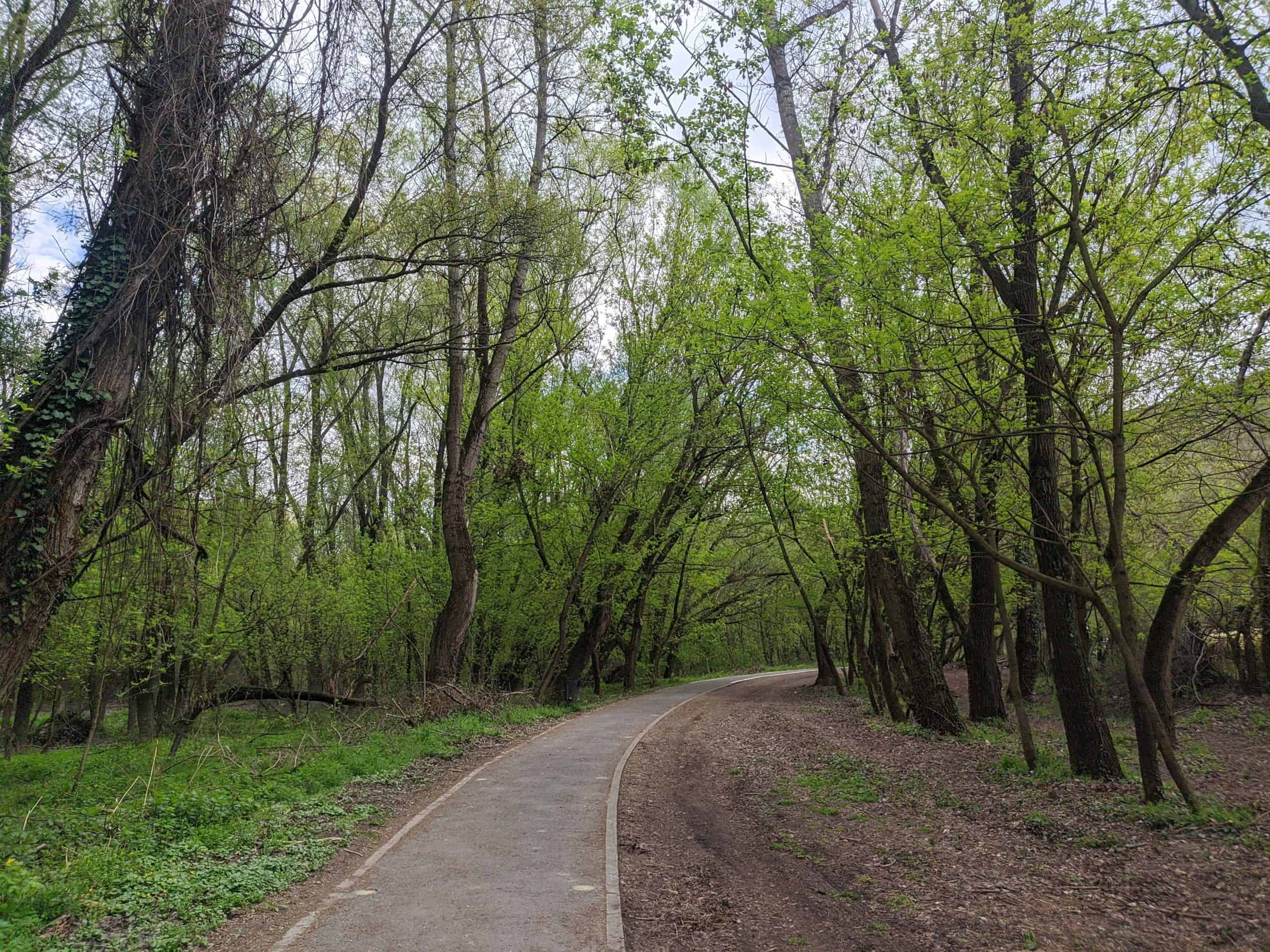

Under greying clouds, I followed the Great Bend of the Danube, notably turning due south for the first time since just after leaving the Rhine (when heading south from Mannheim towards Stuttgart, almost two months prior): a definitive moment. At this point, the Danube splits for a few miles forming an island in the middle, and I followed the road on the west bank of the river. I reached Szentendre in the late afternoon and sat in the old town by the pier on the waterfront, savouring a beer. I then walked for a further 50 minutes inland towards the mountains to my accommodation for the night outside the city, in a suburb called Skanzen.

Sunday
Leaving my accommodation the next morning, I passed a long queue of cars outside, all headed to the Szentendre Skanzen Village Museum just across the road from my inn. The translation on the banner outside the car park proclaimed this to be the Hungarian Open-Air Ethnographic Museum.
There was something Mediterranean about the mountain region around Szentendre; the steep terrain in the distance, the prickly foliage covering the hillside, and the clay roofs of the villas lining the waterfront and valleys. That morning, I descended from Skanzen back into Szentendre’s old town on the Danube. Perhaps it was the abundance of Greek restaurants in the squares that inspired this comparison?
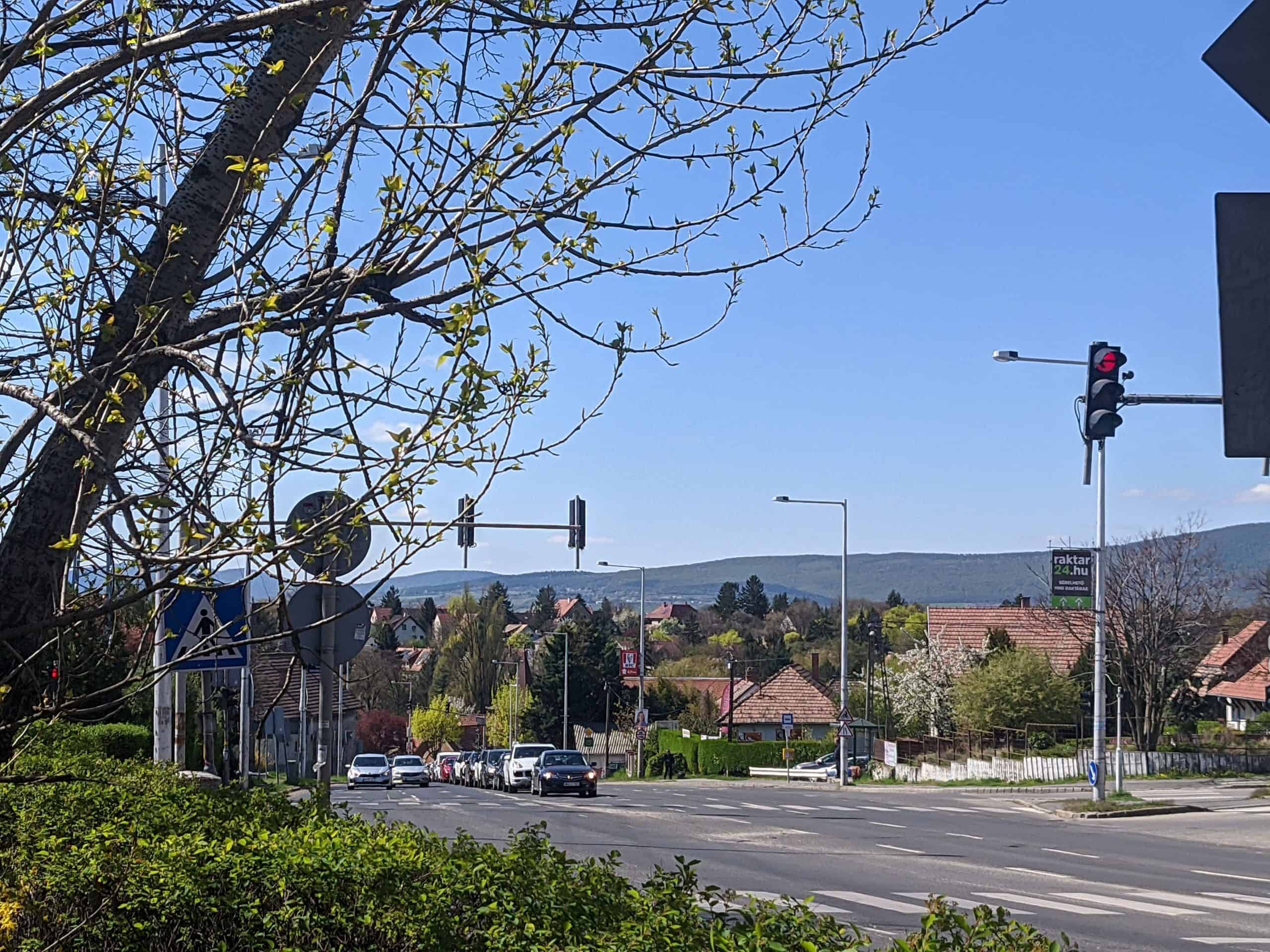
I reached town around 10:30 and immediately sought out an Easter church service to kick off the festivities. I headed across the old town and into the Serbian-Orthodox church where, much to my delight, I caught the latter half of an Easter Sunday service. This Orthodox cathedral, apparently not often open to the public, was originally built by Serbian, Dalmatian and Greek refugees, fleeing the Ottomans due north from Belgrade. Inside, a carved, painted, and gilded iconostasis dominates the central arch of the church, the panelling of which is covered with biblical scenes and depictions of saints. The woody, resinous smells of incense permeated through the brightly illuminated nave, heightening the dissonant chanting of the robed priests. Most of these presbyters were hidden in the wings behind the iconostasis, from where their song emanated. However, two priests conducted the service in full view of the congregation, leading us in song, and dressed in cream robes with golden lacing. It felt like a glimpse of my walk yet to come.
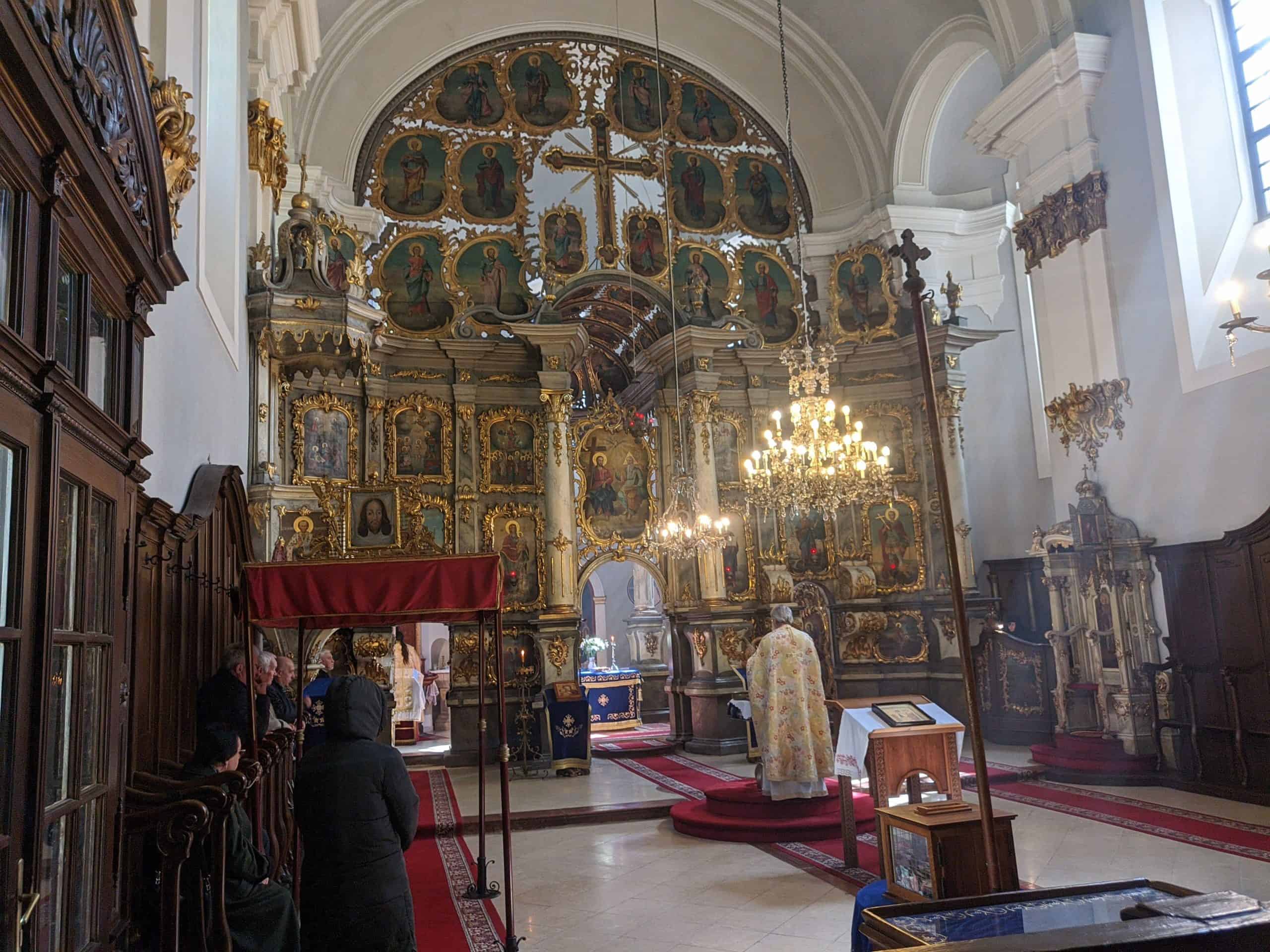
Filing out of the church with the rest of the congregation, I rushed away to catch a few minutes of the Catholic service at the church of St Peter and Paul across town; the air twixt the two holy places was perfumed with spices. Later, around 11:30am, as I sat in a square in Szentendre, planning and recording, the many bells of town began to chime in cannon for a solid five-minute period: persistent and clear.

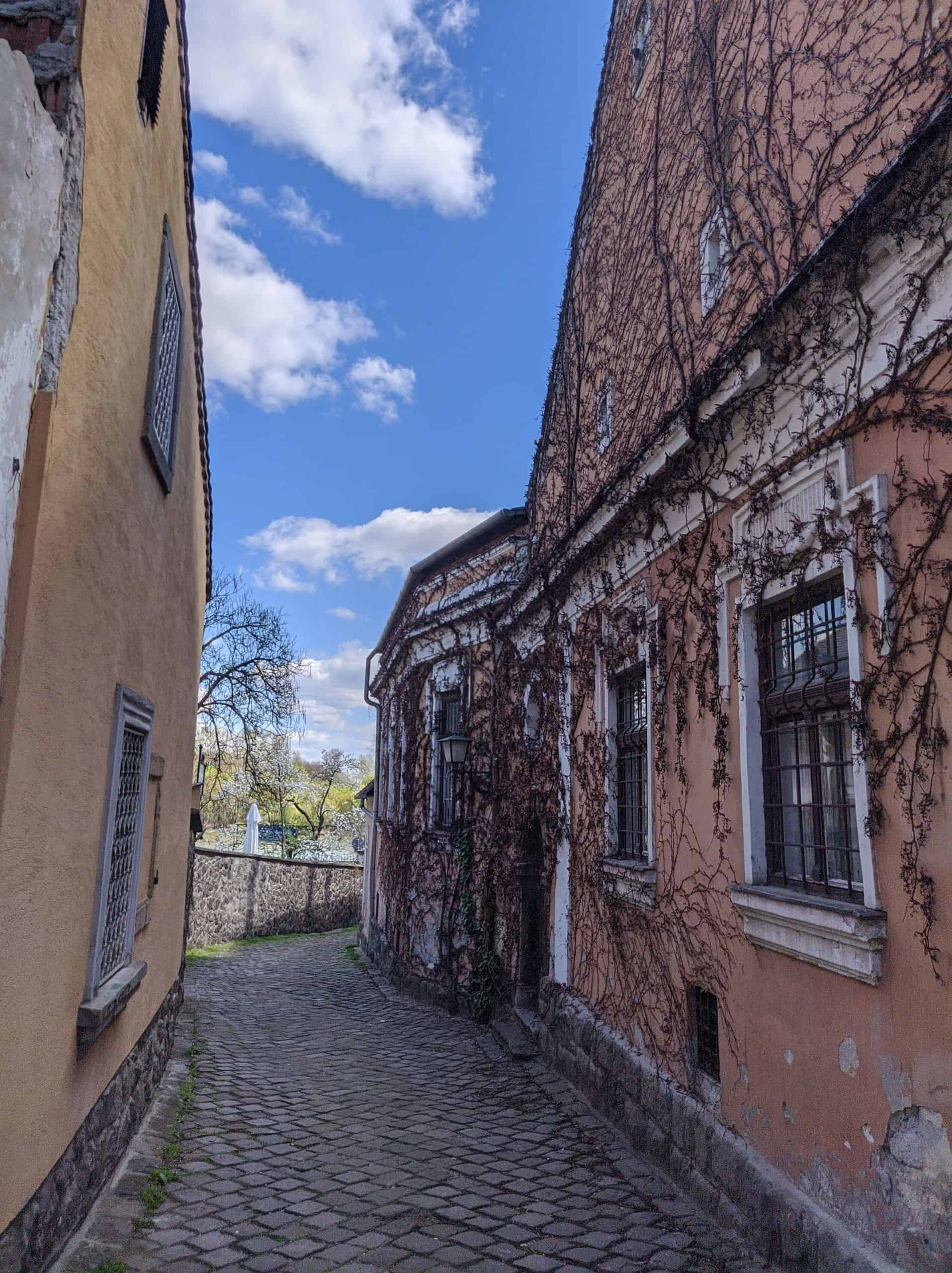
The cogs of a new plan were whirling into motion; over the last few days, many of the locals I had met and struck up conversation with had strongly recommended catching a barge into Budapest. “It is the best way”, a bus driver resting at the side of the river as I left Esztergom had told me. Though I was still a few weeks early for the start of the boating season, as luck would have it, there were a couple of services running from Szentendre for the Easter celebrations. With Budapest only a few miles away, wyrd and my longing for a short river journey on this trip, compelled. (The opportunities on the Rhine and Danube had been limited given the season, and I had all but given up hope as my time on the path of the great rivers was running out.)
With my ticket in hand, and a complementary, farewell shot of pálinka (a national Hungarian spirit) from an enthusiastic waiter, I hopped aboard a white and blue vessel waiting in the small port. We set off promptly at 5pm, heading south. Lush greenery greeted me on either side of the river, and despite a cool draft, the sun was still strong. Passing a string of pebble beaches, soon bungalows raised on concrete stilts increased in frequency. And then, the two channels of the river remerged, and the barge sped along towards the city building up before us. After a couple of bridges, we took in the sights all around, before I was deposited on the banks of Pest, the east side of the city.

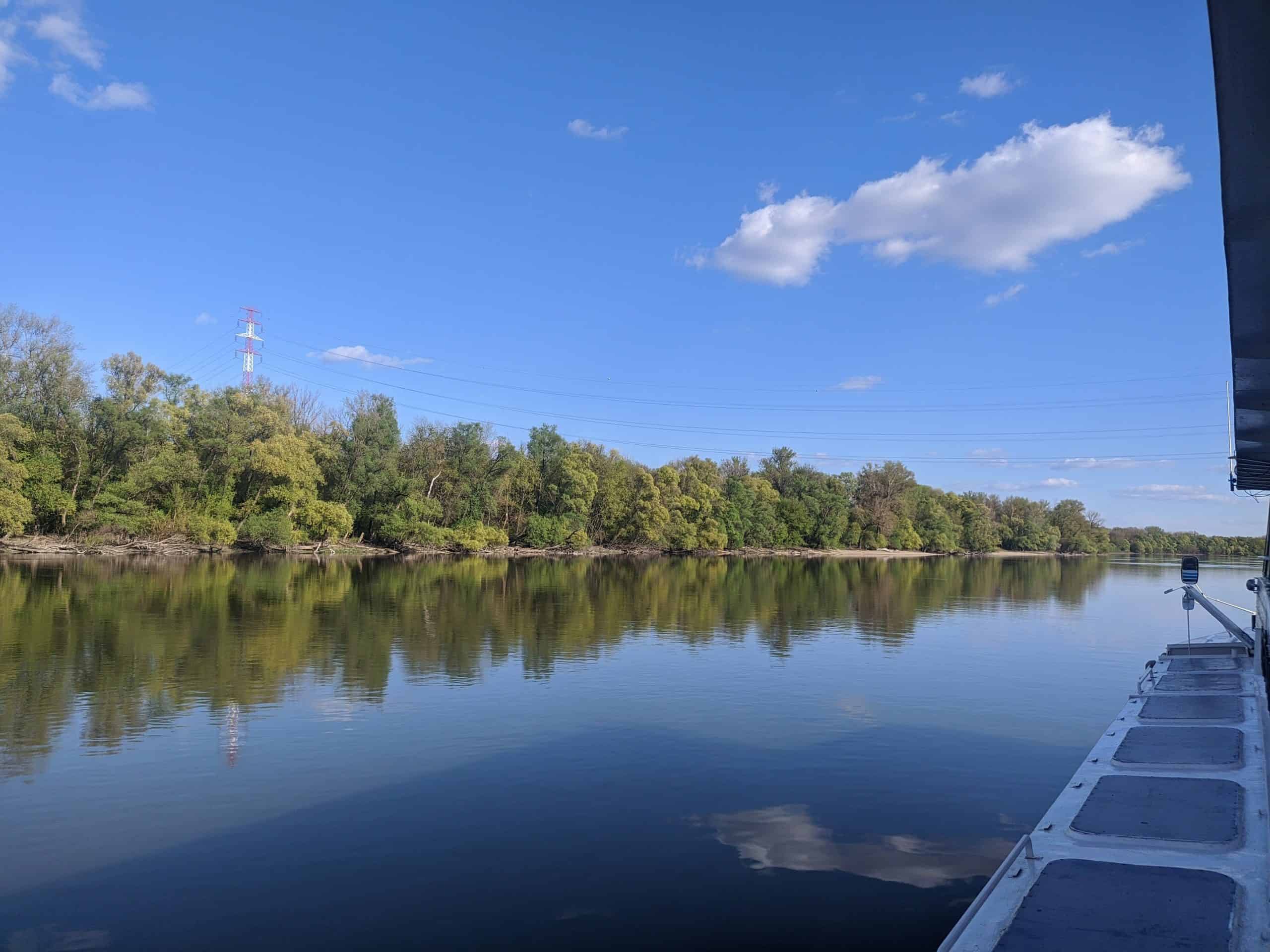

Pest
Having visited Budapest last summer, I had a good idea of what awaited me: a kaleidoscope of architecture, synagogues, coffee houses, and “ruin bars” — an eclectic and vibrant metropolis.
Having alighted the boat, I cut east through town towards the Jewish District, amusingly recognised as the “party” or young person’s section of the city. My hostel made up the top floors of a rickety, revival apartment block. (The floor below had been part of the hostel, but was now serving as a shelter for Ukrainian refugees, many of whom we would bump into during the winding descent from the upper echelons of the building.)
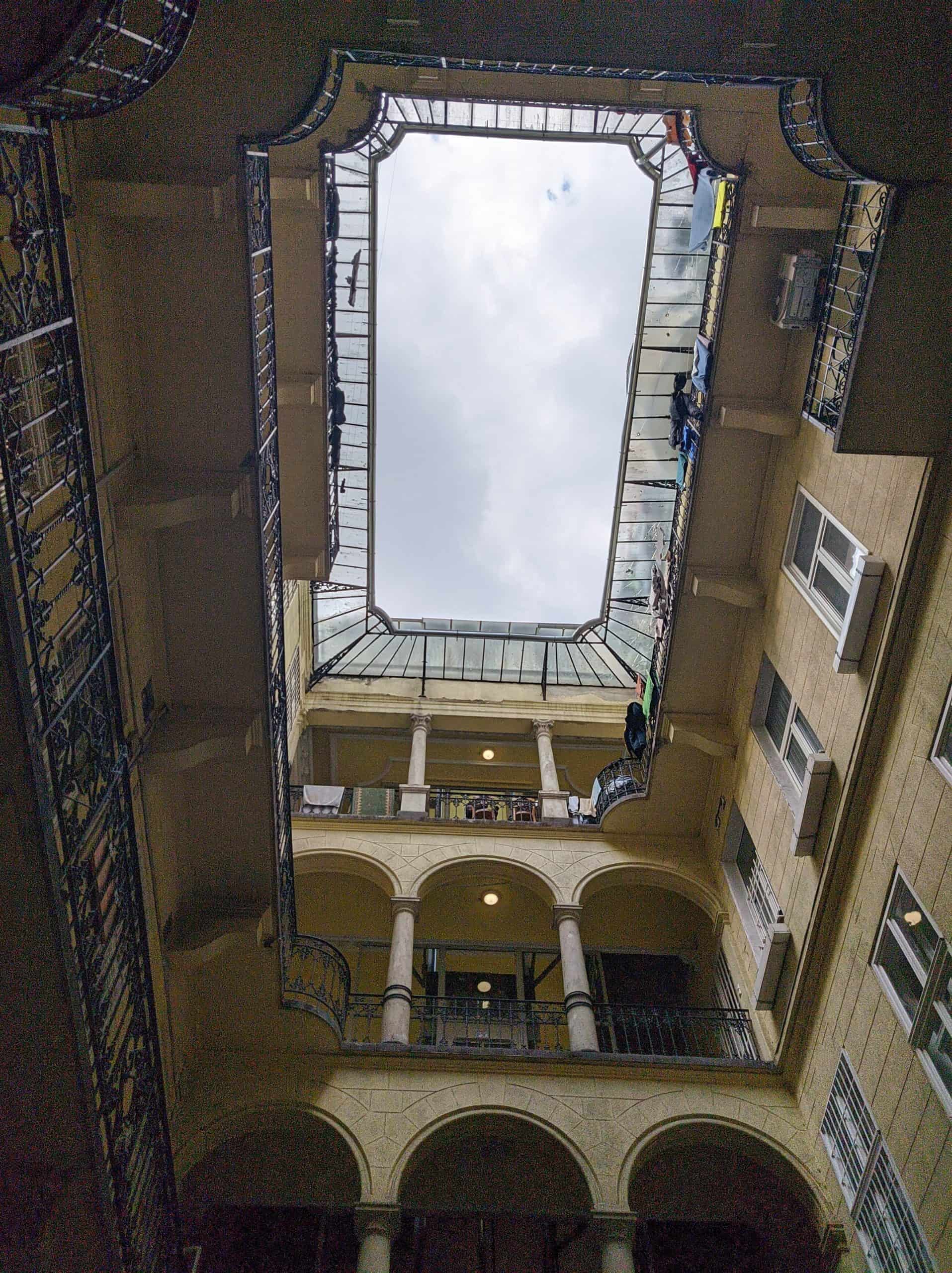
The next few days were a blur of socialising, sightseeing, and planning. I fell in with a group of Essex inter-railers that I met in my hostel, and we explored the odd ruin bar by night and Manhattanite bookstore-cum-café by day. Familiar faces also emerged in the vibrant, crumbling caverns of District VII’s famed bars: I rendezvoused with a German and Dutch girl that I first met in Bratislava. In a brief, solipsistic moment during one of these blurry nights, I was walking the streets of the Jewish quarter en route to another ruin bar, with four girls – one Italian, one Dutch, and two German – all conversing in English. Linguistic privilege is real.
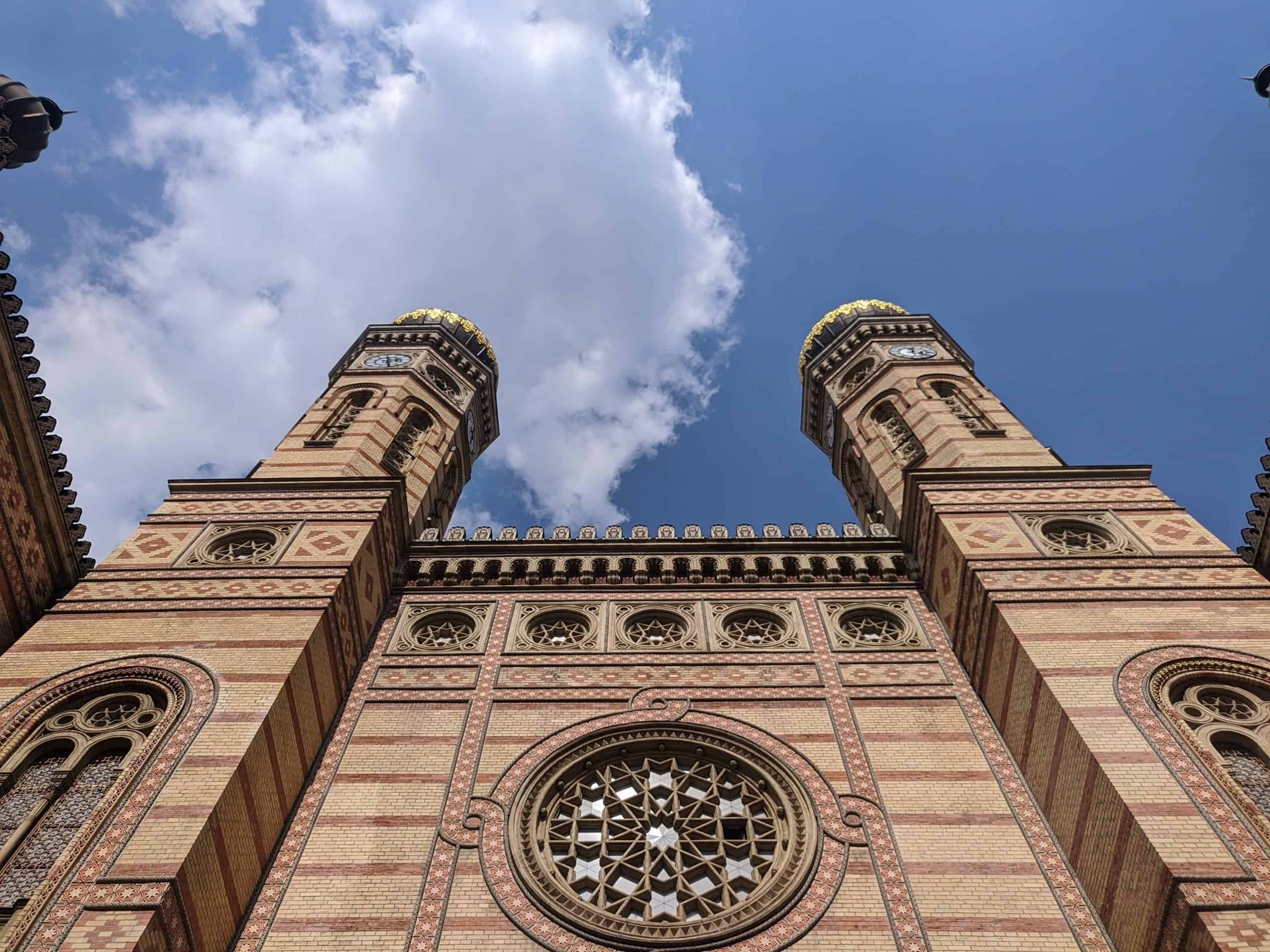
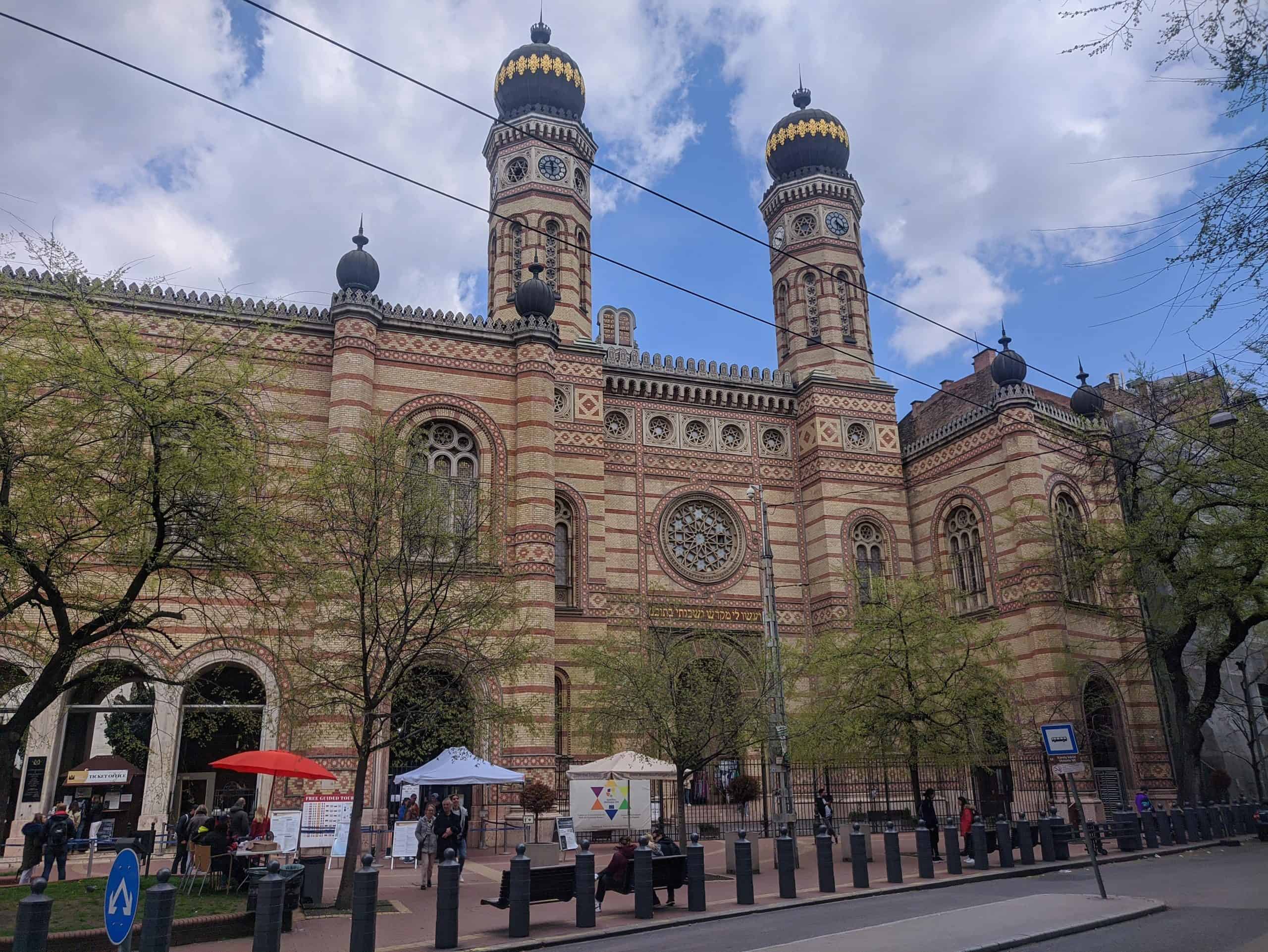
At almost every turn during my time in the prestigious cities of Europe, I seemed to find beneficiaries of the Erasmus Programme. Not one bad experience was spoken of: they remarked to near-exhaustion on a host of wonderful times and people they had met. I become ever increasingly taken with the programme; it appears to cultivate a genuinely open and global world view. Participants I met, of all nations, races, and creeds, displayed an openness to other cultures and expressions — but the programme also appears to foster an environment that actively encourages personal development and the importance of the “other”. Sadly, it seems this is a philosophy to which my home country appears to no longer subscribe. It is an obvious and thoughtless regression, from which I hope we will one day return.
On my final afternoon in the city, I met up with Tomi, a Hungarian YouTuber who had reached out to me on Facebook some weeks earlier. After grabbing a meal of traditional Hungarian food in Pest, we took the Metro a couple of stops under the river into Buda and walked up to Fisherman’s Bastian. Looking out over the river towards the parliament building, we filmed a video for his channel and chatted for a long while.
You can find Tomi’s artfully edited video below — the beginning and end are in Hungarian, but the bulk of the video is in English:

My exodus from Budapest marked the terminus of the middle stage of my peregrination: I was departing from the holy line of illustrious Central European capitals that most travellers to this storied part of the world visit. A pilgrimage trail of inter-railing “Gap Yar” students and budget-airline, whistle-stop weekend holidayers, following the line of cities from Prague, to Vienna, to Bratislava, and to Budapest — often in erratic order. They’ve flocked here keen to witness each unique piece of the European brand blend seamlessly into the cultures that envelop them from all sides: at least, that’s how they’ve sold the trip to themselves and their loved ones. In the end, it is the nightlife that entices — it’s their calling to tipsy stupors on narrow cobbled lanes. A tale of dramatically amusing disillusionment. Though in reality, it’s all part of the charm — the enriched “cultural” experience. A good middle ground is needed: and many find it.
It also marked my departure from the Danube for the last “real” time (although, I will cross it briefly at the Romanian-Bulgarian border): it was the end of the Great River dominated sections of the trudge.
“It is not about happiness; it is about contentment”
Walking out of Budapest to the south-east, I turned back at the top of a gentle hill to take in the city for a final time; I found myself reflecting on a calmness and contentment I had found within myself these few weeks. Yes, it had been some time since I had found a rhythm and philosophy in the face of the unknown and a genuine love of the new — but there was now something new and peaceful behind my eyes, reflecting and enveloping the storied experiences without. This has continued ever since; as I write this many miles later, in the Wallachian hills, I am proud of how far I have walked, but prouder still of how far I have come.
‘Without a sigh I would resign
This busy scene of splendid woe,
To make that calm contentment mine,
Which virtue knows, or seems to know’
(An excerpt from I Would I Were A Careless Child by Lord Byron)
As ever, thank you very much for reading. Welcome to the many new readers who have flocked to the site in the last few days; I have recently been in touch with Tom Sawford, who runs and curates the Patrick Leigh Fermor blog. He has been most kind in offering me advice and well wishes, even alerting fellow Paddy fanatics to my adventures.

Love it again! Looks delightful. I understand H is coming out to join you. That’s lovely! Be nice to him…
Yes sir! He has arrived. We are traipsing around the various haunts of Bucharest. Bulgaria awaits in a couple of days…
You do seem to be enjoying yourself as well as walking which I am pleased about
Granny
Really enjoyed reading particularly reading about the churches you visited
Grandad